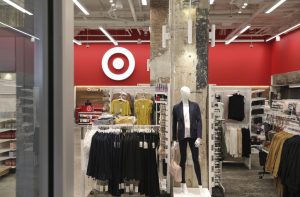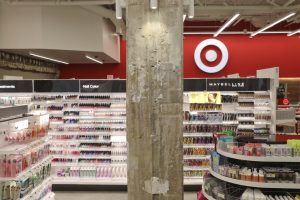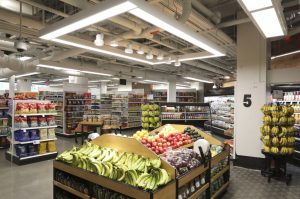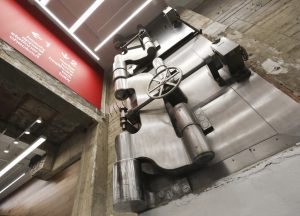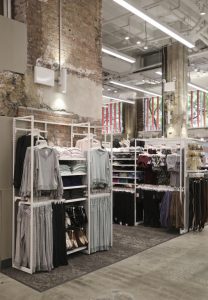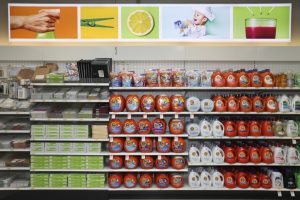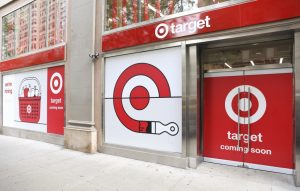As Target (Minneapolis) continues to develop its expansion and renovation strategies with plans for approximately 30 new small-format concepts and 300 additional store renovations on the horizon, holding fast to the tried-and-true is simply not an option. According to Joe Perdew, VP of Store Design for the Minnesota-based retailer, the time was right to take its successful design formula to another level. “In the past, if it didn’t move, it was painted red,” Perdew says.
While the company’s proprietary red and memorable bullseye logo are still of major importance, its new design approach calls for a more judicious use of color, an upgraded application of the iconic bullseye and a deeper connection to the communities it serves.
Knowing that Manhattanites were clamoring for another neighborhood Target (to-date there are five locations in Manhattan and another slated for Columbus Circle), management zeroed in on a 100-year-old building in New York’s Upper East Side.
Step one in the interpretation of the brand environment began with intensive focus groups with the “targeted” community in an effort to understand its wants and needs. The dialogue made it clear that a cookie-cutter environment bathed in red was not the answer. Instead, Perdew opted for a warmer color and materials palette, a nod to the nuances of the neighborhood.
The building, formerly the New York headquarters of the FBI, had good bones and a colorful history. The decision was made to celebrate both. Layers of aged drywall were stripped away, uncovering walls of exposed brick and concrete. A bit of mystique was also unearthed in the construction process with the discovery of a mysterious vault door attached to an interior wall. Upon making this unusual find, store designers decided to leave it intact as a point of interest and conjecture as to what lay behind the giant steel door. Store executives explained that once the mystery of the safe is uncovered, a small informational plaque may be installed to tell the story.
Lighting considerations were a major part of the design solution. An existing mezzanine around the front perimeter was removed in order to allow natural light to stream in through oversized street-level windows. In the lower floor, or basement, it was important to increase light levels to properly showcase the food assortment. Light was also used effectively in a modern application of the Target bullseye, made of metal and back-lit against an exposed brick wall. Strategically positioned back-lit graphics and the company’s custom hanging ring lights soften the area and add variation to the ambient lighting scheme. In an additional upgrade, portions of the polished concrete floor were stenciled with a pattern to help define different classifications of merchandise and sections of the store.
Advertisement
To further simplify the shopping process, customers can order online and pick up their items within an hour at the order/pick-up desk conveniently located and immediately visible upon entry from the main aisle. Positioned on a back wall, the pick-up desk makes a strong statement with a large application of the Target logo paired with the warmth of natural walnut wood. Also available to customers is a self-check-out area on the main floor.
Located on Third Avenue and 70th Street, the 23,000-square-foot, two level space offers an assortment of merchandise tailored to meet the needs of its customer. Offerings include apparel, home goods, electronics, food, personal care and beauty products. Traditionally, Target’s locations are about 130,000 square feet in total. However, in response to an evolving marketplace and changing customer behavior, curated assortments in smaller footprints are being utilized to reach more customers in formerly inaccessible locations. In densely populated urban centers such as New York, multiple small formats in strategically positioned locations, give the retailer greater exposure to customers who wouldn’t necessarily have the opportunity to travel to suburban locations on a regular basis.
Target spokesperson Liz Hancock says, “Nationwide, Target is focused on reaching new guests by opening small-format stores in urban areas and dense suburban neighborhoods and near college campuses – places where a full-size Target store may not fit.”
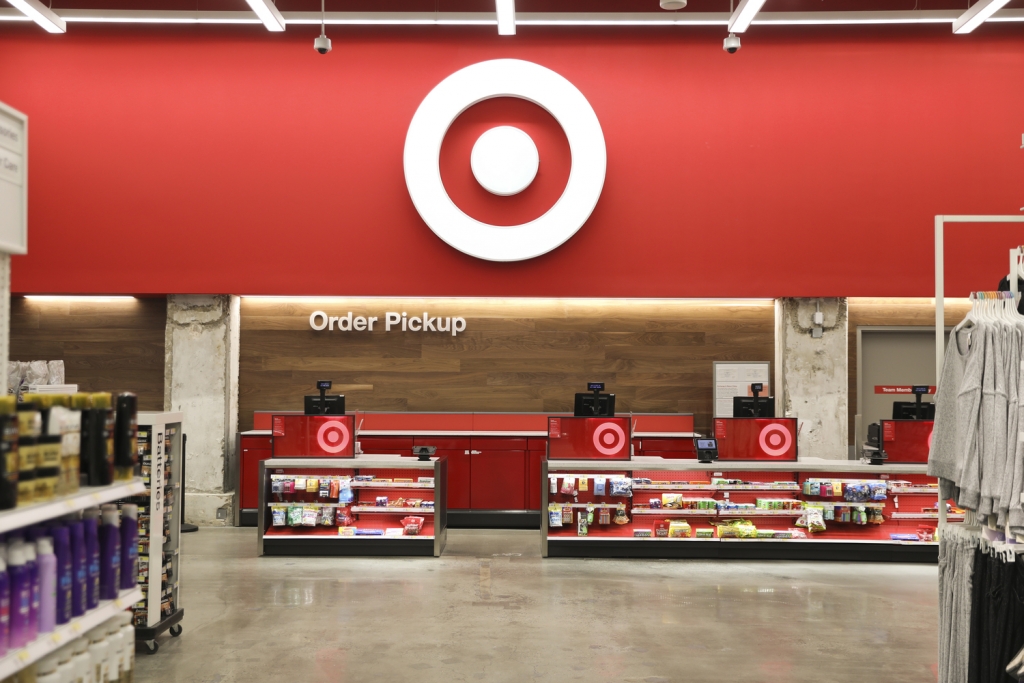

 Photo Gallery2 days ago
Photo Gallery2 days ago
 Headlines1 week ago
Headlines1 week ago
 Headlines2 weeks ago
Headlines2 weeks ago
 Sector Spotlight2 weeks ago
Sector Spotlight2 weeks ago
 Headlines1 week ago
Headlines1 week ago
 Headlines3 days ago
Headlines3 days ago
 Headlines1 week ago
Headlines1 week ago
 Designer Dozen7 days ago
Designer Dozen7 days ago

